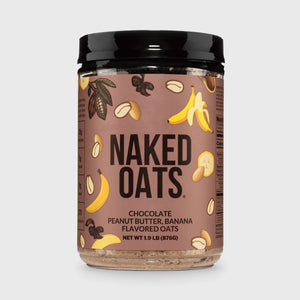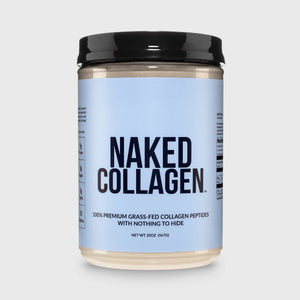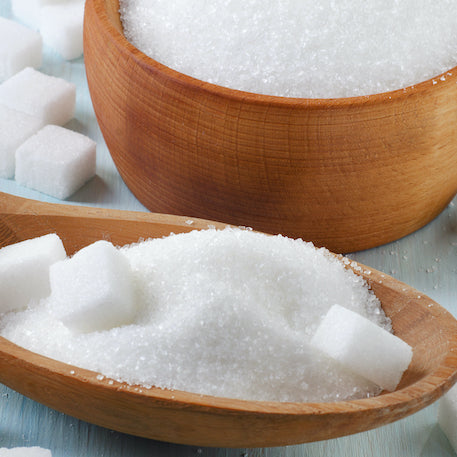You eat a healthy, balanced diet. Sure, you enjoy some sweets, but you try to eat them in moderation and pick the healthiest, most natural options when you do splurge. Of course, you’re not overdoing it on sugar… or are you?
Truthfully, it can be difficult to gauge the amount of sugar in our diets these days. The food industry has become creative, crafty, and efficient, and they have made it possible for sugar additives to show up in most foods on grocery store shelves. Tedious label-reading is necessary in order to determine actual sugar content in most packaged items, and even then, sugar can fly under your radar when labeled as something else entirely.
Although there are a variety of different types of sugars available – they are all sugar. It doesn’t matter if it’s raw natural honey, old-fashioned sugar cubes, or fructose found in fruit. Naturally-occurring sugars carry added benefits in the form of antioxidants and other nutrients, but in the end, sugar is sugar, and all nutritive sweeteners will ultimately break down to glucose after consumption.
It’s unrealistic to completely cut sugar out of your diet, and quite frankly, it is unnecessary. Naturally-occurring sugars are present in our foods in proportions that our bodies can handle properly. More specifically, added sugars need to be limited as much as possible in the diet. Added sugars are those sugars that do not occur naturally in a food, typically added during processing or food preparation (American Heart Association). Added sugars have little nutritional value beyond providing energy, and excess consumption can pave the way for the development of chronic disease.
However, you can reduce your risk of associated health concerns further down the line if you monitor and limit your sugar intake now. See the infographic below which shows the U.S. consumption of sugar, related health effects and provides helpful tips to reducing added sugars.

Too Much of a Sweet Thing
The 2005-2010 NHANES study found that the average American certainly consumes more than their fair share of sugar. Typical daily intake is equivalent to 20 teaspoons per day, with men and teenagers consuming the most (American Heart Association). This intake is equivalent to 77 grams sugar per day, accounting for approximately 300 extra calories.
In a given year, the average American will consume about 10% of their daily calories from added sugars, including roughly 160 pounds of refined sugar annually. One 2014 study linked added sugar intake to cardiovascular disease mortality. This study concluded that, regardless of any other risk factors, the risk of dying from heart disease increased proportionally as sugar consumption increased. Study participants who consumed 17 to 21% of daily calories from sugar were 38% more likely to die from heart disease than those with 8% calories from sugar, while those exceeding 21% of daily calories from sugar had nearly twice the risk.
So just how much sugar should we consume? Obviously, it’s unreasonable to completely avoid it. However, the amount of sugar in the standard American diet is well in excess of our needs. The American Heart Association recommends limiting consumption of added sugars to approximately 6 tsp/day (100 calories) for women and 9 tsp/day (150 calories) for men, while the World Health Organization (WHO) suggests limiting added sugars to 10% of daily caloric intake or less.
Fortunately for those of us watching our sugar intake, added sugars are now included on the new nutrition labels that are in the process of implementation. While the general public is undoubtedly aware of the dangers of added sugars, we continue to consume it at rates far too high for our needs.
It is estimated that adult sugar consumption in the United States has increased by more than 30% in the past three decades. The main culprits are sugar-sweetened beverages such as soda and energy drinks that continue to remain popular despite links to many health concerns. One 12-ounce can of regular soda typically contains approximately 8 teaspoons of added sugars, while a 20-ounce bottle contains more than 13 teaspoons!

Short-Term, But Not So Sweet
The human body is clever. If we consume more of a nutrient than our body requires, it uses every trick possible to handle the situation. However, sometimes this solution may cause a variety of short-term side effects and issues.
For example, unless you are diabetic, your pancreas is extremely skilled at controlling your blood glucose levels. After consuming a meal containing carbohydrates, insulin is released to counteract increased blood glucose levels.
Alternatively, if your blood glucose dips too low due to fasting or illness, the pancreas releases glucagon, which allows blood glucose levels to normalize. Despite this efficient system in place to maintain relatively consistent blood glucose levels, insulin and glucagon release may cause mild side effects such as lethargy, dizziness, and decreased mental clarity.
Long-Term Troubles
The development of obesity is the most detrimental problem connected to long-term excessive sugar intake. Like all carbohydrates, sugar contains approximately 4 calories per gram, which adds up over the course of a year, a decade, and a lifetime. If added sugars are introduced into the diet and do not replace another nutrient, overall caloric intake will increase, ultimately allowing for weight gain. If left unchecked, obesity can develop due to poor dietary habits in as short a timeframe as a few months.
Obesity isn’t just a state of being overweight; rather, it carries with it increased risk for a variety of chronic illnesses. The National Institute of Diabetes and Digestive and Kidney Diseases (NIDDK) advises that overweight and obesity are independent risk factors for type 2 diabetes, hypertension, heart disease, strokes, sleep apnea, osteoarthritis, fatty liver disease, kidney disease, pregnancy complications, and even some types of cancers. Diabetes is a common complication of obesity, with approximately 87% of all diabetic adults overweight or obese (NIDDK). Weight loss of approximately 7% can decrease the risk of developing type 2 diabetes, and those individuals already classified as diabetic may improve their quality of life, maintain appropriate blood glucose levels, and decrease the risk of diabetes-related complications by losing weight.
Hypertension (high blood pressure) is another extremely common obesity-related disease. Typically, hypertension develops in obese individuals due to the increased effort required of the heart and blood vessels to pump blood and circulate it around the body. Obese individuals are also more likely to have kidney damage, which may lead to elevated blood pressure due to ineffective blood pressure regulation (NIDDK). If left untreated (especially in combination with high cholesterol and high blood glucose), hypertension can allow for the development of heart disease, which includes heart attacks, strokes, and heart failure.
Other side effects of excessive sugar intake may include joint inflammation and even gout (due to the development of uric acid), tooth decay and enamel erosion, accelerated skin aging, and even memory impairment and increased risk of developing dementia.
Kick Added Sugar to the Curb
So, we’ve established that excessive added sugar is harmful. However, where do we draw the line? It’s quite simple – draw the proverbial line between naturally-occurring sugars (such as those found in fruit) and refined added sugars that are intentionally added to food products and supplements.
First, become a label-reader in the grocery store and online when purchasing supplements. Second, seek out lower-sugar options where possible such as our wide selection of protein powders, many of which contain just a single ingredient. Third, avoid sugar-sweetened beverages. And last, simply pay attention to what you’re consuming on a daily basis. Your future health will thank you for it.
Help people understand the dangers of sugar - share this graphic.













